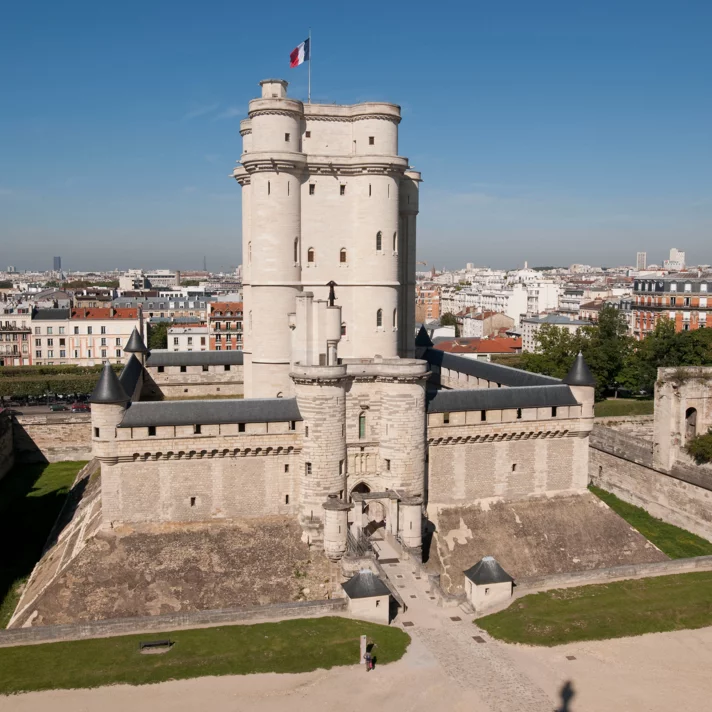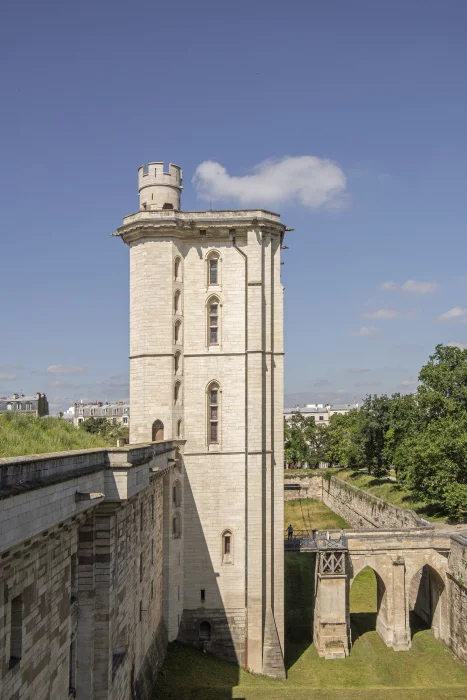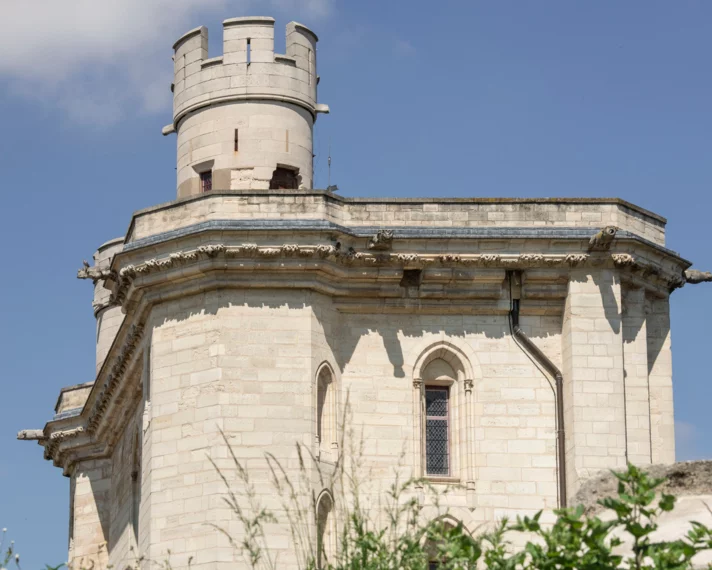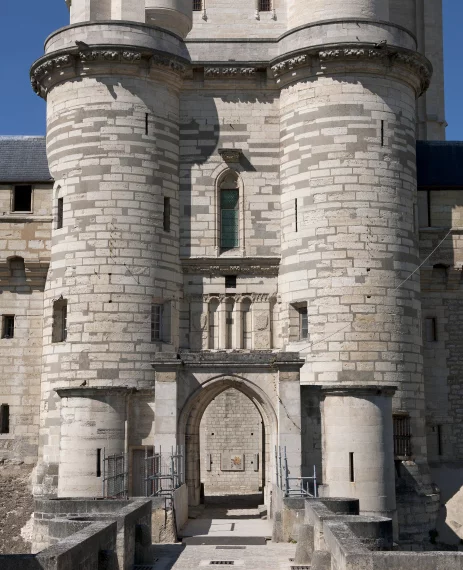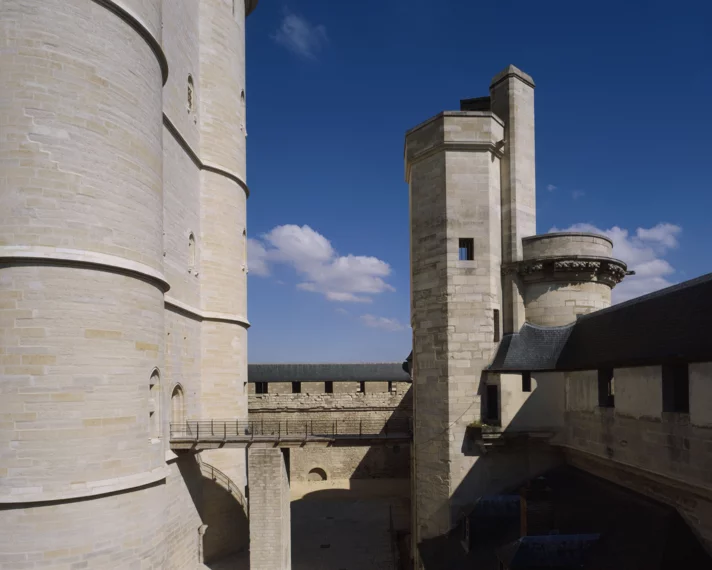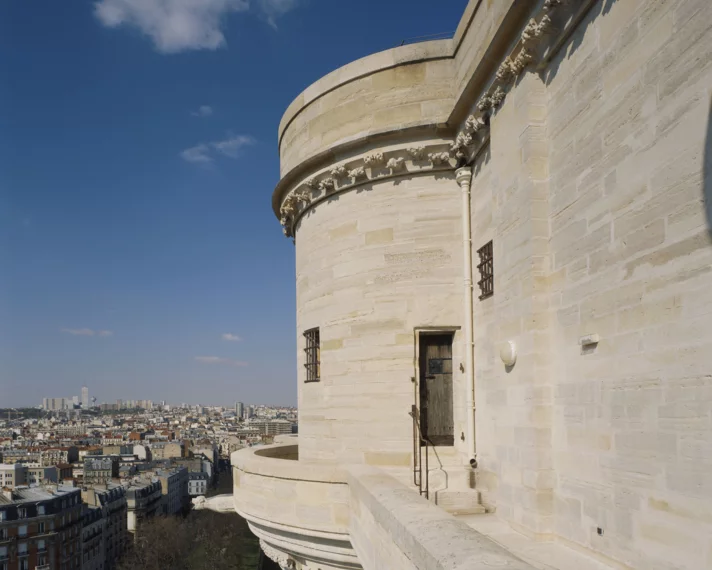History
article | Reading time10 min
History
article | Reading time10 min
Built in the 14th century, the château de Vincennes is a veritable fortress. Take a tour of the keep and its surrounding walls, complete with drawbridges, machicolations and catapults!
Vincennes was chosen as the site for a new royal manor house at the end of the 12th century, close to the capital and several communication routes. This was a pleasure residence for sovereigns and their families, such as Philippe Auguste and Louis IX. Around 1337, King Philippe VI commissioned the digging of foundations to fortify the manor, but the work came to a halt.
The Hundred Years' War began, and Edward III, King of England, scored a series of victories over French chivalry. Against this backdrop, France experienced a succession of political, military and social crises. In February 1358, the people of Paris rose up, led by Étienne Marcel, the city's provost marketeer. They attacked the Palais de la Cité, where the son of King Jean II le Bon was staying. The Dauphin, the future Charles V, was deeply affected by this assault, which led him to relaunch plans for a fortress at Vincennes.
Construction of the main tower began in 1361, using Philippe VI's foundations. It was completed in just 10 years - a record for the time! Charles V was determined to assert his power over his foreign adversaries and his own people.
A true royal residence, the château was also an incredible place of safety. Why not take a closer look?
Jean-Pierre Delagarde / Centre des monuments nationaux
It's the key element of Charles V's castle!
Built on five levels, the Vincennes keep is the tallest in Europe. It is 50 meters high and its walls are over 3 meters thick. Each of its corners has a turret, and the top has a vast terrace. This can accommodate imposing war machines, such as catapults. Lastly,a watchtower stands on top.
The main access to the keep's courtyard is via an immovable standing bridge. A castellum, fitted with a harrow and a stunner and preceded by a barbican It protects the entrance.
Completed in 1369, it forms the centerpiece of the defensive system. The system also includes a moat, drawbridge and bund wall. with crenellated walls and loopholes and machicolations . In the troubled 14th century, everything was designed to keep the king safe.
As soon as he moved in, around 1368, Charles V assigned a large garrison to the estate. The captain, in charge of the estate's military affairs, had under his command artillerymen, gunners, crossbowmen, knights and squires. The sovereign also had a personal guard. In all, between seventy and eighty men of war ensure the castle's security.
Patrick Cadet / Centre des monuments nationaux
From 1378 onwards, Charles V had a second, much larger enceinte built. It was over a kilometer long and covered an area equivalent to that of a medieval town! This is proof that the monarch wanted to turn the Château de Vincennes into a place of power for his advisors, court and servants.
The ramparts are surrounded by a deep moat and topped by nine towers, some 40 meters high. While these towers form part of the castle's defensive system, they also have a residential function. They each house bedrooms, complete with fireplaces, latrines and sculpted decorations. A luxury designed for the king's guests and close friends!
Three of them are fortified entrances, including the Tour du Village. Built around 1375, it was equipped with battlements and later used as a gateway. As for the other six buildings, they were used to fire projectiles at attackers.
Splendid and imposing, the Château Fort de Vincennes is the expression of Charles V's political project. Why not come and admire this exceptional site for yourself?
Jean-Pierre Delagarde / Centre des monuments nationaux
Jean-Pierre Delagarde / Centre des monuments nationaux
Jean-Pierre Delagarde / Centre des monuments nationaux
Patrick Cadet / Centre des monuments nationaux
Patrick Müller / Centre des monuments nationaux
Patrick Müller / Centre des monuments nationaux


